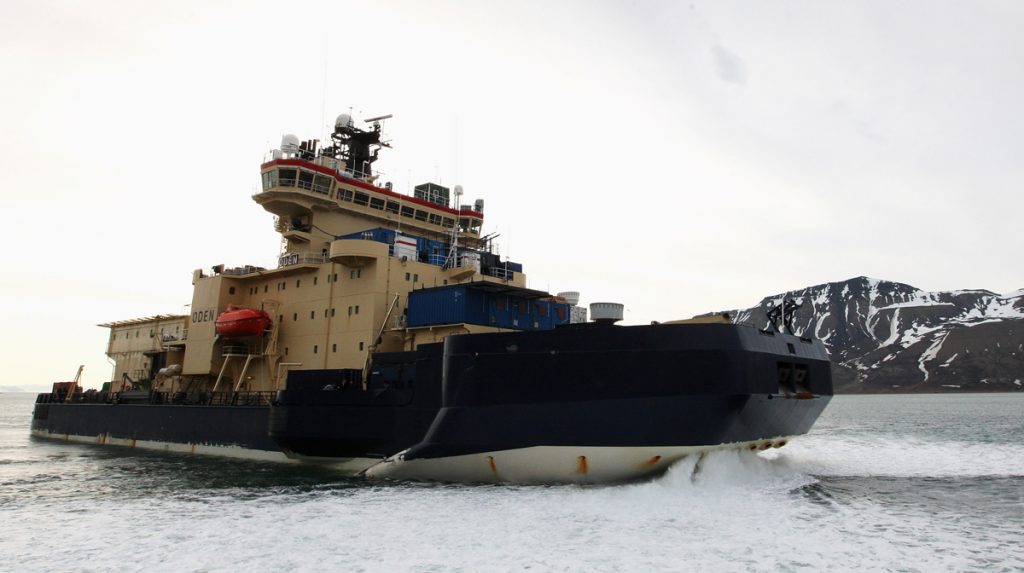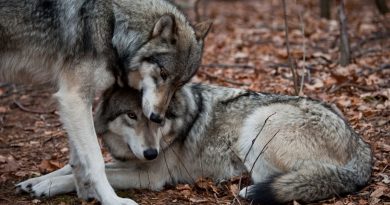Swedish icebreaker reaches North Pole for climate study

Science expedition sails north to find link between formation of Arctic clouds and record heatwave and drought on mainland Sweden.
Sweden this summer has suffered the most wildfires in modern times in what might be linked to human-caused climate changes. While emergency services got help from other European partners to fight the blazes, the Swedish Polar Research Secretariat embarked on board the country’s most prominent icebreaker, the Oden.
This Sunday, Oden crushed the last miles of sea ice and reached the top of the world, 90 degrees north, with an on board group of 40 researchers from around the globe. Main goal: to study how the formation of clouds in the Arctic affects the climate in times of melting pack ice.
Expedition Arctic Ocean 2018 is a Swedish-American research project that will last until late September.
Understanding Arctic climate
Professor Caroline Leck with the Stockholm University is Co-Chief Scientist for the expedition.
“Clouds play a central role in the Arctic climate. Consequently, we must rise to the challenge and carry out onsite studies into the link between life in the sea and cloud formations, a logistical and technical challenge beyond the ordinary in inhospitable and inaccessible areas of the North Pole”, Leck says.
She points to the fact that deglaciation has occurred faster than anticipated. “Perhaps the Northeast Passage will be passable by merchant vessels as early as in ten year’s time”, she suggests. “If so, it would have a huge impact on the dynamics of international political economy.”
At the top of the world, the icebreaker Oden will be moored to a large ice floe for the next month. Researchers will here take measurements and collect vital statistics from the sea, ice and air, trying to find out how the varying parts of the complex Arctic systems are linked together.
With a better knowledge of how climate changes affects the Arctic, the researchers hope to get better methods to predict climate of the future.
After encountering tougher ice conditions than expected, the Swedish-U.S. research expedition #ArcticOcean2018 reached the North Pole yesterday. This is the 9th time Oden reaches 90°N. 📷 @LehnertLars pic.twitter.com/B5ZpU2LmiK
— SvenskPolarforskning (@polarforskning) August 13, 2018
Many questions
For the formation of clouds, aerosols originating from microbiological life in the sea and ice is important. One question is what happens when more sea opens up as the sea ice around the North Pole melts; will that lead to more biological particles bubbling out to the atmosphere, causing increased cloud formations? If so, will more clouds cause an earlier freezing season in the Arctic, the researchers ask.
The mystery of how clouds impact Arctic climate was not to be answered on arrival, the first day at the North Pole provided the international science crew with clear skies and Midnight Sun.
Meanwhile, on mainland Scandinavia, meteorologists concluded that July’s heatwave was breaking all earlier recordings in time of monthly measuring of temperatures dating back to as early as 1756.
Related stories from around the North:
Canada: Warming Arctic could be at heart of deadly July heatwave, CBC News
Finland: Finland’s drought ends with violent storms, Yle News
Norway: Arctic Europe’s July records melted under extreme temperatures, The Independent Barents Observer
Russia: Densely-packed ice makes navigation difficult in Russian Arctic, The Independent Barents Observer
Sweden: Melting ice brings down Sweden’s highest mountain peak, Radio Sweden
United States: Rapid Arctic warming is increasing the frequency of blizzards in U.S. Northeast: study, Radio Canada International




“After encountering tougher ice conditions than expected” Please note their voyage took place near the end of the Arctic Summer, a time when the presence of Ice would be at it’s lowest.
This Statement debunks AGW alarmist’s claims of a catastrophic “Warming of the Arctic” &” the Arctic Ice Pack is shrinking into Oblivion”.
The presence of tougher ice conditions than expected supports claims that the Arctic Ice Pack is thickening and expanding.